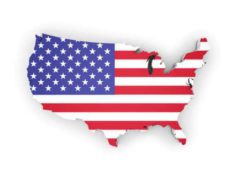
Introduction
Illegal immigrants, also known as undocumented immigrants, are foreign nationals who arrive in a country without appropriate authorization from the government. Illegal immigration has become a significant and complex issue in the United States, affecting various aspects such as laws, the economy, and social welfare. Although it is believed that illegal immigrants take away jobs and increase the crime rate, much of the impact of illegal immigration is still a subject of debate. This article will explore how illegal immigrants affect laws and the economy of the United States.
Illegal Immigration Laws and Policies
The United States has various laws and policies that regulate immigration, including immigration quotas, visa regulations, and border security measures. However, despite these laws and policies, a significant number of people still manage to enter the country illegally. As a result, illegal immigrants have become a subject of national concern, causing policymakers to develop strategies to regulate illegal immigration.
One of the most common strategies is to increase border patrols and law enforcement to control illegal entry. The number of border patrols has significantly increased since the 1990s, when more than 4,000 Border Patrol agents were deployed on the southern border. In 2020, the Border Patrol had increased to over 20,000 agents. Despite the increase in border patrols, illegal immigration remains a problem, and the government has increasingly used technology to monitor the border. For example, drones, cameras, and sensors have been deployed to detect and deter illegal activity.
Another form of regulation is employer sanctions, which makes it illegal for employers to hire unauthorized workers. Employers who violate this law face hefty fines and penalties. However, enforcing employer sanctions is challenging, and many employers still hire undocumented workers, which they believe is cost-effective.
The Economy and Illegal Immigrants
Illegal immigrants have a significant economic impact on the United States. On the one hand, they contribute to the economy by paying taxes and performing jobs that often go unrecognized. On the other hand, they may take jobs away from US citizens and use social welfare programs without contributing to the tax base.
Jobs and Wages
One of the primary concerns of illegal immigrants is that they take away jobs from US citizens. However, studies have shown that this is not entirely accurate. Many illegal immigrants work in agriculture, hospitality, and other low-skilled jobs that US-born citizens are not willing to do. In fact, the US Department of Agriculture estimates that crop production alone would decrease by $5 to $9 billion without the labor of undocumented workers. Moreover, some employers prefer to hire undocumented workers because they are willing to work for lower wages.
Illegal immigration also affects wages. Some studies suggest that illegal immigration lowers wages for US-born workers in low-skilled occupations. This is because undocumented workers are willing to work for lower wages than US-born workers, making it difficult for US workers to compete in the labor market. However, other studies find that illegal immigration does not necessarily lower wages and may even raise them in some cases.
Taxes and Social Programs
Although illegal immigrants are not eligible for most federal social programs, such as Medicare and Social Security, they still pay taxes at the local, state, and federal levels. They pay sales tax, property tax (as renters), and federal income tax if they have a valid Social Security number, which about half of undocumented workers do. According to the Institute on Taxation and Economic Policy (ITEP), undocumented immigrants in the United States paid $11.8 billion in taxes in 2012.
However, this is a relatively small amount compared to the cost of public services that illegal immigrants use, such as K-12 education, emergency medical care, and public safety. In 2013, the National Academy of Sciences estimated that the average cost of public services per undocumented immigrant was $1,261. However, this is an estimate, and the actual cost may vary depending on the state and local laws and policies.
Crime
Another concern regarding illegal immigrants is that they may increase crime rates in the United States. However, studies have shown that this is not necessarily accurate. In fact, some studies show that illegal immigrants have lower crime rates than US-born citizens in some cases. For example, a study by the Cato Institute found that the incarceration rate of illegal immigrants was about half that of US-born citizens. However, this is not to say that illegal immigrants do not commit crimes or that they do not have a negative impact on public safety.
Conclusion
Illegal immigration is a complex issue that affects various aspects of the United States, including laws, the economy, and social welfare. Although the impact of illegal immigration is still a subject of debate, it is clear that this issue requires a comprehensive solution. The United States needs to balance the economic benefits of illegal immigration against the social costs and prioritize the safety and well-being of all citizens, both legal and illegal.
There exists a demand for immigration laws to be reconsidered and put into place. Comprising a bulk of our country’s workforce, laws must be put into place to govern and protect immigrant workers who sustain so many of our businesses. In contrast with the citizens of the privilege bestowed on citizens of the United States – including access to higher education, and an aim to assume positions in white collar jobs, those wishing for an on-skilled, low-paying job are a select few.
The slow disappearance of the middle-class makes it imperative for a somewhat residual working-class to maintain its crops, making these lower wage jobs undesirable to an assumed upper-class.
Immigration laws are expected to be reevaluated and announced by the Senate between late January to early February of 2010. Some of the immigration laws discussed will include topics such as:
A health insurance program for immigrant children that would allow states to waive the five-year waiting hold, instead offering health care insurance benefits to those legal children in low-income families.
A new immigration law would include a three-year extension on three immigrant visa programs that were set to expire this year.
The role of the Department of Justice had a in these new immigration laws, including more money for immigration judges and for the legal orientation programs where immigrants in detention have the right to obtain information on their legal rights.
Amendments to the immigration laws, including a number of bills that will be introduced to prove the immigration reform progress, which includes the DREAM Act, which would provide legal status to select young graduates from U.S. high schools and AgJobs that would attribute a legal status to specific immigrant farm workers.
Another immigration law addressing the number of hearings on the various issues of the immigration system, which some perceive will set the United States on track to exercising organization with the whole process of immigration. Law-abiding citizens will find themselves in a happy place with these new reforms.
Administrative Reforms are expected to include the following:
People suffering from HIV will no longer provide a reason to bar entry into the United States.
Budget requests to include money for the border security initiative, including money to improve the immigration detention system, as well as funding for an initiative for immigrant integration and the funding to process refugee and asylum applications.
The assurance of prosecution of employers who knowingly hire workers without proper legal documentation, which would then put less stress on the para-military sweeps of job sites where guns and dogs were used to gather undocumented workers.
The realization of a need to shift some of its resources to secure the Southwest border and to try to reduce border violence; this would include the inspection for guns and funding from the United States bound for Mexico’s drug cartels.
























